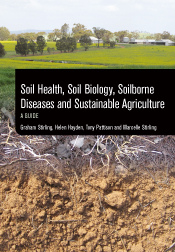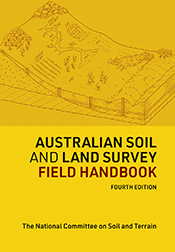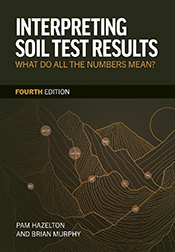Soil Hydrology in a Changing Climate
Edited by: Humberto Blanco, Sandeep Kumar, Stephen H Anderson
Explores the impact of changing climate on soil hydrology and soil water dynamics.
A changing climate is causing challenges for soil and water management in many parts of the world. Current soil management practices need to be redesigned to effectively address present and future fluctuating climates. + Full description
Soil Hydrology in a Changing Climate explores how soil management practices impact soil hydrological characteristics, and how we can improve our understanding of soil and water management under changing conditions. Soil hydrology includes water infiltration and soil water storage, which are critical for agricultural plant and animal production. With our future climate predicted to include hotter, drier conditions, increases in evapotranspiration as well as fewer, more intense storms, improved soil management and soil hydrology are critical to ensuring our agriculture production can meet human demand.
This comprehensive book is a valuable resource for land managers, soil conservationists, researchers and others who wish to understand how different management practices affect soil and water dynamics and how these practices can be adjusted to enhance agricultural sustainability and environmental quality.
- Short descriptionNews
Sales in Australia and New Zealand only. Elsewhere, this title is available through CRC Press (external link).
Details
Hardback | December 2022 | $180.00ISBN: 9781486313778 | 272 pages | 245 x 170 mm
Publisher: CSIRO Publishing
B&W photographs, Colour plates, Illustrations
ePDF | December 2022
ISBN: 9781486313785
Publisher: CSIRO Publishing
Available from eRetailers
ePUB | December 2022
ISBN: 9781486313792
Publisher: CSIRO Publishing
Available from eRetailers
Features
- Explores the impact of changing climate on soil hydrology and soil water dynamics.
- Examines how effective soil management can improve soil health, water infiltration and soil water retention.
- Discusses relationships of conservation tillage systems, diversified cropping systems, crop residue management, conservation buffers, and forest land use with soil hydrology.
- Provides case studies of modelling of soil water management.
Contents
PrefaceList of contributors
1: Land use changes and fluctuating climate
2: Climate fluctuations and soil hydrology
3: Soil health and soil water
4: Conservation tillage and soil water
5: Crop diversification and soil water
6: Crop residue management and soil water
7: Conservation buffers and soil water
8: Forest land use and soil hydrology
9: Urban soils and soil water
10: Maintaining wetland ecosystem services in a changing climate
Colour plates
11: Soil water management and climate fluctuations: modelling approach
Index
Authors
Humberto Blanco is a Professor of Soil Management and Applied Soil Physics in the Department of Agronomy and Horticulture, University of Nebraska-Lincoln, USA. His research work focuses on soil physical processes and properties as well as soil C dynamics under different management practices including crop residue management, cover crops, conservation tillage, cropping systems, organic farming, conservation buffers, dedicated biofuel crops and biochar.
Sandeep Kumar is an Associate Professor of Soil Biophysics and Hydrology in the Department of Agronomy, Horticulture and Plant Science at South Dakota State University, USA. He has been working on assessing conservation practices on soils and environmental quality, including soil health indicators, water quality and quantity, GHG emissions and crop productivity. In 2016 he received the Young Scholar Award from the Soil Science Society of America.
Stephen H. Anderson is the William A. Albrecht Distinguished Professor of Soil and Environmental Sciences in the School of Natural Resources at the University of Missouri, USA. His current areas of research include evaluating soil management effects on soil hydraulic properties, developing X-ray computed tomography and microtomography techniques to assess pore-scale soil properties and processes, and utilising hydrologic models to evaluate effectiveness of conservation practices at the watershed scale.
Contributors:
Rebecca Abney, Salah M. Alagele, Stephen H. Anderson, Nicholas J. Balster, Claire Baffaut, R. Louis Baumhardt, Humberto Blanco, Edward P. Boswell, Christine Costello, Aaron Lee M. Daigh, Nandita Gaur, Sagar Gautam, Glenn R. Guntenspergen, Jerry L. Hatfield, Gary L. Hawkins, Jane M. F. Johnson, W. Carter Johnson, Sandeep Kumar, Rattan Lal, Robert J. Lascano, Matthew R. Levi, Ali Mehmandoost, Peter L. O’Brien, Quang Phung, Sabrina J. Ruis, Udayakumar Sekaran, Allen Thompson, Anita M. Thompson, Ranjith P. Udawatta, and Kenneth M. Wacha.








